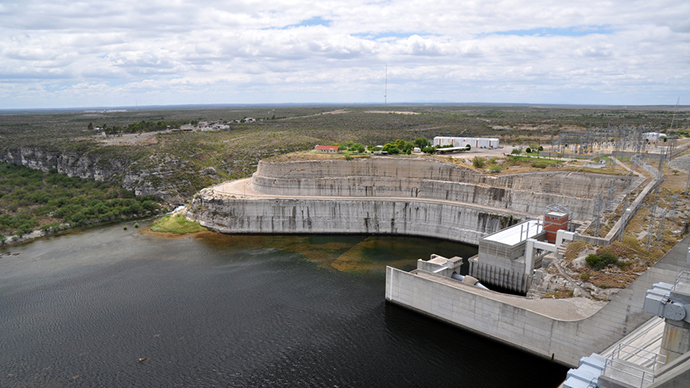Court ruling shields public safety info due to potential ‘terrorists’

A US appellate court decision this week could allow federal agencies to withhold public safety information related to crucial infrastructure concerns or environmental disasters because of potential nefarious use by “terrorists or criminals.”
A US Court of Appeals for the District of Columbia panel ruled this week that such information can be concealed from the public by US government entities for “law enforcement purposes” because “terrorists or criminals could use that information to determine whether attacking a dam would be worthwhile.”
The case was brought by Public Employees for Environmental Responsibility (PEER), a resource non-profit for potential government whistleblowers. PEER’s attempt to use a public information request to compel the release of emergency plans for two large storage dams on the Rio Grande River was thwarted, as was its call for inundation maps that show which areas around the dams would flood should a failure occur.
PEER says the decision “significantly expands the scope of the exemption under the Freedom of Information Act for material compiled for ‘law enforcement purposes.’”
“Under the standard articulated by the court, the majority of information about known risks and planned responses to virtually every emergency could be placed off limits,” PEER senior counsel Paula Dinerstein, who argued the appeal, said in a press release. “This ruling will block affected communities from learning about plans to prevent and respond to chemical spills.”
In PEER’s case, it had inquired with the United States Section of the International Boundary and Water Commission (USIBWC) about multiple emergency plans, over 75 inundation maps, and a 2009 report on the condition of the Amistad Dam - the largest dam on the US-Mexico border.
USIBWC refused to release the material even though, according to PEER, the agency had acknowledged “external reviews showing two major structures, the Falcon and Amistad Dams, are in ‘urgent’ need of repair.”
In its decision, the panel referenced a supposed “intelligence alert” from the US Department of Homeland Security that outlined an alleged plan by drug traffickers to blow up Falcon Dam.
“The alert states that traffickers warned some local residents to evacuate in advance of a possible attack on the dam. That record evidence confirms what common sense suggests: The inundation maps, if disclosed, could reasonably be expected to endanger life or physical safety,” the ruling stated.
The USIBWC’s stated mission “is to provide binational solutions to issues that arise during the application of United States-Mexico treaties regarding boundary demarcation, national ownership of waters, sanitation, water quality, and flood control in the border region.”
Dinerstein pointed to recent spills in West Virginia and the Gulf of Mexico as examples where nearby residents would be left in the dark regarding actions to take in an emergency, all for the sake of shielding such information from those who might exploit it for nefarious purposes.
“Basic emergency planning should not be treated as a state secret,” said Dinerstein. “By the court’s incredibly deferential standards, virtually every federal agency could withhold maps, assessments and even phonebooks if an official can imagine a potential nefarious use for them. A vigilant public will lose access to much of the information needed to protect itself and to agitate for changes that prevent these man-made disasters from occurring.”
The case in West Virginia adds another layer to how the federal government handles emergency response to chemical spills. Two weeks ago, a coal-processing substance known as MCHM began leaking into the Elk River and the surrounding community from a tank at a plant owned by Freedom Industries.
Officials say state and local planners did not have an emergency response plan in case of a spill of Crude MCHM. The absence of strategy for such an accident may be explained by a federal emergency planning law - the Emergency Response and Community Right to Know Act - that does not require one for Crude MCHM because it is not listed under federal rules as an "extremely hazardous material.” Crude MCHM is also known as 4-methylcyclohexanemethanol.
The same day the leak was discovered north of Charleston, the US House passed the Reducing Excessive Deadline Obligations Act that would ultimately eliminate requirements for the Environmental Protection Agency to review and update hazardous-waste disposal regulations in a timely manner. It would also make it more difficult for the government to compel companies that deal with toxic substances to carry proper insurance for cleanups, thereby pushing the cost on to taxpayers.
In addition, the bill would result in a slower response time in the case of a disaster, requiring increased consultation with states before the federal government could call for the cleanup of Superfund sites - where hazardous waste could affect people and the environment.
The legislation is not expected to pass in the Senate, nor does it have support from the White House.














